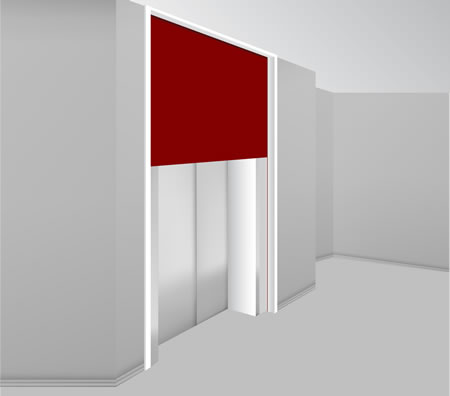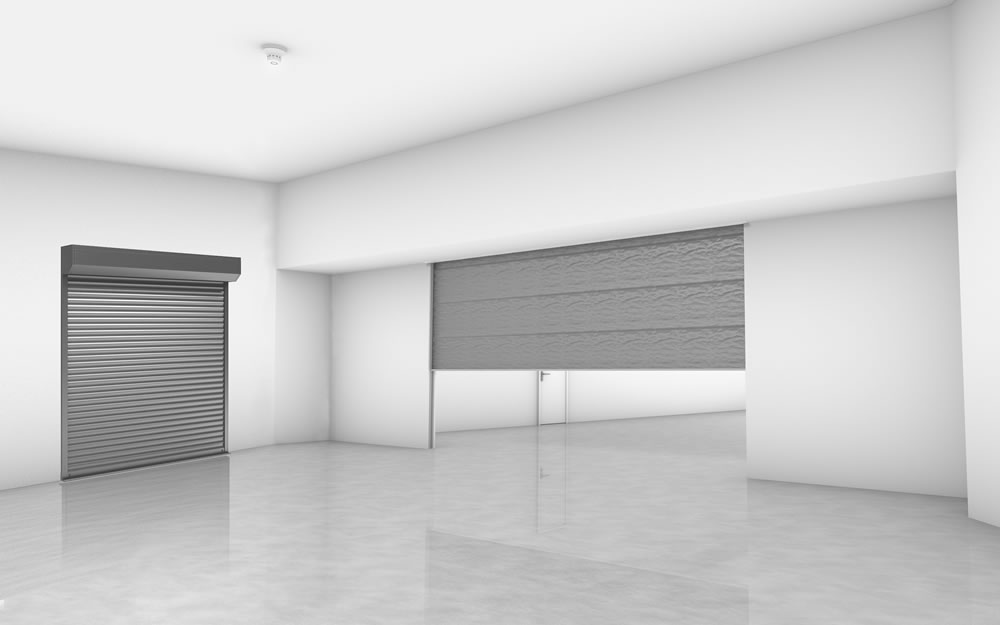Fire curtain VS Fire shutter
Fire curtains and Fire shutters work to stop the spread of smoke and fire in a fire event. A fire alarm system can automatically trigger both. Both are there to minimize property damage and save lives. Despite their similarities, there are some things to consider before choosing the right option for your project.
What is a fire shutter?

Fire shutters are used as structural barriers to compartmentalize and prevent the spread of fire. Generally made of galvanized steel or stainless steel, fire shutters offer a traditional and robust method of fire compartmentation.
Where are they used?
Fire Rated Shutters are mostly used around high-risk areas or places containing highly flammable materials, such as factories, warehouses, and garage parking. They are listed for fire protection ratings from 1 to 4 hours, and qualify as opening protectives.
How do they work?
Some fire shutters can be connected to the building’s fire alarm. Others can be activated by a thermal fusible link that will release the shutter when it reaches a specific temperature. A closing mechanism can operate some fire shutters, and others deploy under their weight.
What are Fire Curtains?

Fire curtains are a deployable, textile opening protective that seal off an area on fire to contain and prevent smoke and fire from spreading. Fire curtains are made of a flexible fire-resistant woven fiberglass textile, with steel guides and headboxes.
Where are they used?
Since they can be installed completely hidden above the ceiling, fire curtains offer a more aesthetically pleasing alternative to traditional solutions. They are normally used in open-plan situations and where the aesthetics of the building matter the most, like atria, stairwells, lobbies, and in front of elevators of commercial buildings. Fire curtains typically provide 60, 120, or 180-minute fire ratings.
How do they work?
In the event of a fire, the fire curtain descends upon receiving a signal from the fire control panel to seal off an opening. Fire curtains feature a fail-safe gravity technology. The fire curtain will deploy under gravity at a steady speed even if there’s no power in the building.
Choosing between a Fire Curtain or a Fire Shutter?

Whether specifying fire curtains or fire shutters should depend on how well they can be integrated into the building design. There are three main factors to consider: appearance, price, and building type.
1. Appearance
Where the visual appearance of a building is essential, fire curtains are the best choice, since they are out of sight until needed. They can seamlessly integrate into the design of the building. A steel fire shutter is bulky and harder to integrate with existing walls and design.
2. Price
Fire shutters are less expensive than fire curtains. If your project can handle the weight of shutters, the size of the headbox, and the aesthetics of the side guides and headbox, fire shutters are the best and cheapest solution.
3. Building type
You might find fire shutters in high fire risk buildings with flammable materials and where the aesthetics are not the priority, like warehouses. On the other hand, in commercial buildings, with more occupants, fire shutters can interfere with egress pathways. The heavy steel fire shutters can hit occupants while closing and cause injury and block egress. Metal fire shutters can retain heat from the fire, risking people inside trying to escape. Large metal fire shutters are also a risk for firefighters.
The fire curtain is an unobtrusive solution that does not compromise on safety. Fire curtains have an emergency switch to open it and easily egress out from the burning area.
Still not sure which one to use? The Fire Curtain Technologies team of engineers is ready to help you find the right option for your next project. We provide design and code compliance support free of charge.

